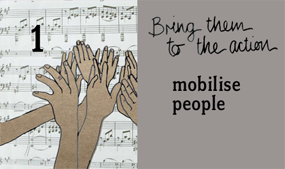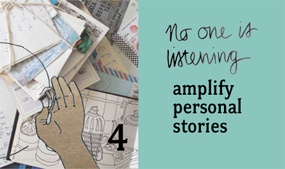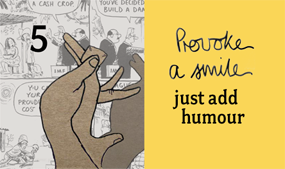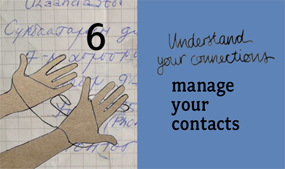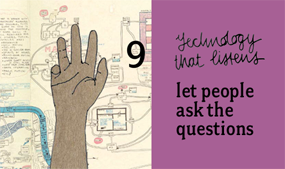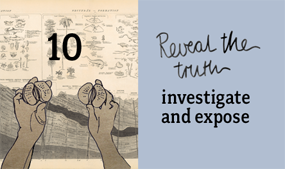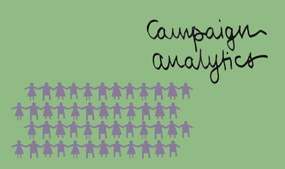The first thing that impressed the Cyprus Community Media Centre about the 10 Tactics material was the way it presented different ways of using common tools to achieve a greater impact, said Beran Djemal, their Outreach Officer for the Turkish Cypriot community. “It’s not like we will have to gain lots more new skills, or we have to spend lots of hours learning new skills,” she said. “It’s simple.” Plus, she added, using new tactics and tools doesn’t require a large budget. “That’s very important for activism, because otherwise you’re limiting your influence. Not everybody has access to the big technological tools, or money, or any budget, so that’s another big value of 10 Tactics.”
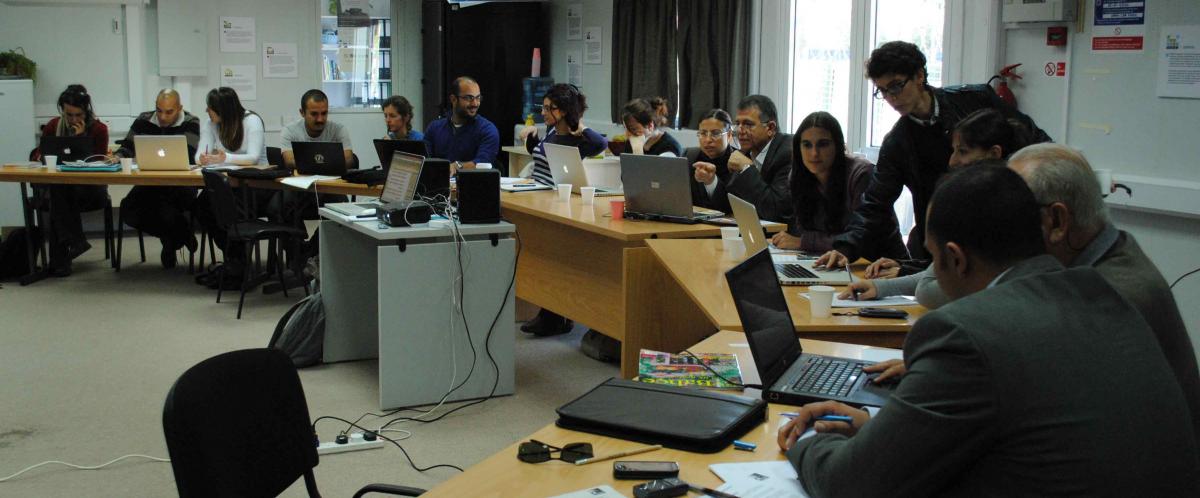
Founded in 2009, the Cyprus Community Media Centre (CCMC) is aimed at establishing community media by working with a network of about 30 non-governmental organisations, offering training and supporting their communication efforts. Wanting to set an example for its member organisations, CCMC began putting the 10 Tactics into practice after hosting a public screening of the 10 Tactics film in May 2010. For example, CCMC plotted the Center on a Google map, began regularly updating its Facebook page with announcements, using YouTube for their videos, and increased Twitter usage to “try to reach as many people as possible through utilising all these different tools,” Djemalsaid. “We also try to promote or try to explain the importance of sharing information differently.” For example, using cell phones to record videos or take photos. “We always try to mention the easier, practical ways of utilising the tools that we already have,” she said.
In an effort to spread 10 Tactics, CCMC has used the video to conduct several trainings for Cypriot civil society organisations and activists, such as a feminist group wanting to plan a demonstration to raise awareness about sex slavery. The group wanted an easier, more effective way of mobilising people to attend the demonstration, and of getting coverage of the event, so CCMC screened the 10 Tactics video and shared the various toolkits with them, Djemalsaid. In the end, the feminist group created a Facebook page, getting out the word so that five television channels and 11 newspapers covered the demonstration, all of which was “inspired by the 10 Tactics video,” Djemalsaid.
In Cyprus – an island divided in two, with the northern part comprised of Turkish Cypriots and the southern part comprised of Greek Cypriots – the tactics and tools CCMC chooses to use are based on the audience it is trying to reach, Djemal explained. “For youth organisations, we try to utilise videos more, and also audio slideshows, so they can use Facebook and YouTube” because “young people spend most of their time on Facebook or YouTube anyway.” But when working with human rights organisations or policy makers, CCMC focuses more on written materials and still photographs, she said. “I don’t think they’re following Facebook and YouTube as much as other groups. But they are following the newspapers, so for that we have to keep being conventional, because that’s the easiest way to reach (them),” she said. In general, Djemal said, CCMC has found that video seems to be the most effective way for reaching the Cypriot community, as Cypriots tend to use the internet mostly for social networking and viewing videos.
Beyond political sensitivities resulting from a divided island, language barriers also are a problem, as information must be translated into English, Greek and Turkish before it can be used, Djemal said. This means that 10 Tactics is limited in its effectiveness because it is not in Greek or Turkish, she said. The language barrier makes it “difficult for to be shared with the wider numbers,” she explained.
Even with this drawback, 10 Tactics is inspiring, says Djemal, making CCMC want to share with its member organisations the “good news” of cheaper, more practical ways to create and communicate messages. “The most important part is it’s very, very activist-friendly,” she said. “It showed us that only even one person, if they use the material in an innovative way and use, utilise different resources, different tools, which doesn’t require budget or technical skills, they can create a change... I think it really changed the way we look at activism. We became more optimistic about our own work.”
Story written by Summer Harlow.
Interview conducted by Michael Nevradakis, Autumn Caviness, and Matthew Tedrow as part of research led by Dr. Laura Stein at the University of Texas at Austin.
Photo: A Blogging Workshop held on 7 December at our Cyprus Community Centre's Community Space.



